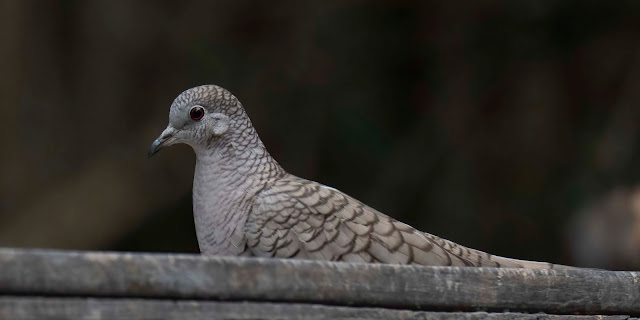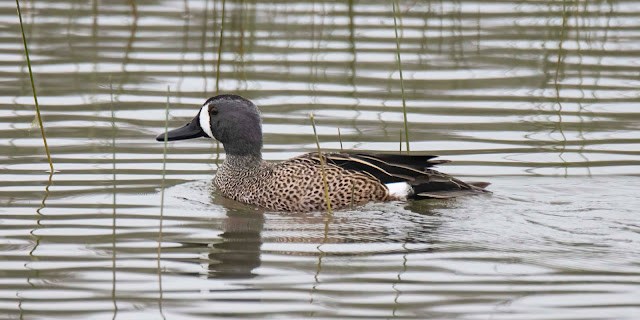 |
| I wanted better Great Kiskadee photos |
And, there were a few more that I had seen but wasn’t happy with my photos. So, off I went.
The main thing that was driving me was my Life Bird count. I had a goal to hit 700 in 2020. That did not happen because of the COVID pandemic. So, I transferred the goal to 2021. And, even with my travels in 2021, I made it to only 698.
So close! But not where I wanted to be.
I have a birding trip to Costa Rica planned for March that will deliver lots of birds (it better!). But, I wanted to head out for that one with at least 700.
 |
| Bat Falcon |
Then, I also saw reports of a rare Social Flycatcher in Brownsville and an even rarer Blue Mockingbird at Carlsbad Caverns in New Mexico.
I could go far south and swing by New Mexico on the way home.
Of course, driving anywhere in January requires planning and luck. And, the weather forecast looked good. So, I planned my trip.
I had a limited window between some doctor’s appointments and Public Relations Society of America (PRSA) meetings (I am on the Board and committed to attending as many meetings as possible). But, it looked like I could squeeze in seven days, including the four days that would be taken up driving there and back. At the last minute, one of the PRSA meetings got moved up a day, so my time got further restricted.
But I was willing to make a go of it.
Unexpected Weather
 |
| Long drive in mainly freezing weather |
It was 6°F when I left home for my long drive to my first stop in Junction, Texas. On a good day, that’s an 11 ½ hour drive.
I started out slowly because it was dark and I was concerned about ice on the dark Interstate. Luckily, even though there was light snow, I never encountered anything dangerous.
I was surprised however, that the weather never topped freezing, even all the way down in mid-Texas.
Because I had such a long day’s drive, I didn’t stop. So, there isn’t much to report on Day 1.
Santa Ana National Wildlife Refuge
On the second day, I made it to SANWR before noon and started looking around.
Because of COVID, the Visitor Center was not open, but there were many helpful volunteers, rangers and fellow birders. I did a lot of searching, walking and seeing birds, so I won’t go in any order. Instead, I will talk about the NWR and the various birds I saw there.
It was a goldmine.
In two days, I got eight Lifers ar SANWR.
 |
| A new Cormorant for me! |
SANWR, a 2,088-acre National Wildlife Refuge on the banks of the Rio Grande in the Lower Rio Grande Valley in Hidalgo, Texas, was established in 1943 to protect the diverse migratory birds that pass through that area.
 |
| It has a tropical feel |
There are no roads past the parking lot and Visitor Center.
The Park is set up well for birding, with knowledgeable volunteers, good trails and the tower. Plus, it has my favorite, found in lots of Parks in Texas: a feeding station. This makes it easy to see and photograph birds you might have trouble finding otherwise.
 |
| Seen at the feeders, top: Golden-fronted Woodpecker; bottom: Altamira oriole |
 |
| A Least Sandpiper braving the chill |
I did see lots and lots of birds, primarily because I decided to come back the next morning for a guided bird walk.
What amazed me was the number of birds we saw on the walk in the same area I had walked by myself the first day and seen very little.
 |
| Common Yellowthroat |
 |
| At first glance, you wouldn't guess how many birds are here |
I also saw a number of birds from SANWR’s observation tower, aided by fellow birders with scopes.
Bat Falcon
But first, let’s talk about the Bat Falcon.
 |
| My quarry |
I saw it three times: once at a great distance from the observation tower ...
 |
| I hoped this wouldn't be my only sighting |
... and then at sunset on my first day at SANWR ...
 |
| At least a closer sighting (even if it was dark) |
... and at sunrise on my second day ...
 |
| A nice pose |
Sightings 2 and 3 were at the entrance of the Refuge. This little cutie has been religiously showing up for a few weeks to sit on and fly around a telephone pole across a busy highway from the road that goes into the Refuge parking lot.
 |
| Quite a gathering |
Birders gather, politely wait, watch and snap pictures. Unfortunately, trucks often blast their horns as they speed by. Since no one blocks the road (or even stands near it), I assume the truckers think it is funny to scare off a bird folks have traveled many miles to see.
 |
| Can you see the Bat Falcon on the pole? |
Unfortunately, all my sightings were either far away in poor light or just in poor light. Thank goodness for Photoshop!
Dashing small falcon of tropical lowlands and foothills. Prefers forest edge, adjacent semi-open areas with tall trees, buildings.
Found at several Maya ruins in Mexico and northern Central America (note: it is also found in South America and Trinidad), also locally in towns.
Looks dark overall with a contrasting white throat, and in flight can be confused with White-collared Swift.
 |
| Such a cutie |
With a good view, note the rusty belly and 'trousers.' Hunts bats at dusk, but main food is small birds caught in flight.
 |
| Fluffing up in the wind |
It somewhat resembles its same-sized cousin, the American Kestrel, but is darker with a blazing white neck. That white is what made it possible to pick it out of the distant trees from the observation tower.
 |
| Like a needle in a haystack |
The call of this species is a high pitched ke-ke-ke like the American Kestrel. And, like a Kestrel, it bobs its tail for balance when it sits.
Bat Falcons perch conspicuously on high, open snags, from which they launch aerial attacks on their prey.
They hunt bats, birds, small rodents and large insects such as dragonflies. The smaller male takes more insects and the female more birds and bats. The Bat Falcon is partly crepuscular (active at dawn and dusk), as the bats in its diet suggest. It nests in unlined holes in trees.
 |
| Bat Falcon Range; eBird |
It is the first documented sighting of a Bat Falcon in the United States.
The very first!!! That's a big deal.
Ironically, I’ll probably see one in March in Costa Rica.
Maybe I can get a picture in better light!
More Great Birds
SANWR has documented 397 bird species within its borders. Many of those are migratory species on their way to and from Central and South America.
I saw 55 species, including 49 I saw on the guided walk.
My list of sightings is below. The asterisk is the birds I saw only on the guided walk and might not have seen on my own.
Black-bellied Whistling-Ducks and a lone White Ibis* ...
Blue-winged Teals ...
Northern Pintails ...
 |
| The lake's namesake |
Lesser Scaups ...
 |
| Floating in the chilly lake |
Pied-billed Grebes ...
Inca Doves ...
 |
| Seen at the feeding station |
Black-necked Stilts ...
Least Sandpipers* ...
 |
| A whole flock flew in and landed |
A Spotted Sandpiper* (maybe two) ...
 |
| Spotted Sandpiper in non-breeding plumage (hence no spots) |
Great Egrets ...
 |
| An elegant bird |
A Green Heron ...
Harris's Hawks ...
 |
| Viewed from the observation tower |
A Gray Hawk ...
A Northern Harrier* ...
Crested Caracaras ...
 |
| The picture of grace |
Belted Kingfishers* ...
 |
| All the Belted Kingfishers were in distant trees |
A Yellow-bellied Sapsucker ...
Ladder-backed Woodpeckers, male ...
... and female * ...
 |
| We heard the hammering first before she took a break |
Eastern Phoebes* ...
Vermilion Flycatchers ...
Great Kiskadees ...
 |
| A very pretty bird |
A Tropical Kingbird* ...
Green Jays ...
 |
| We saw lots of these beautiful birds |
A Northern Cardinal* ...
 |
| Pretty against the green plants |
A Ruby-crowned Kinglet* ...
 |
| Moving fast through the trees |
Great-tailed Grackles ...
 |
| This one was too heavy for the twig it selected |
Common Yellowthroats* ...
Plus, birds I didn't photograph: Green-winged Teals, Cinnamon Teals, Ruddy Ducks*, Northern Shovelers, Wilson's Snipes*, an Anhinga, lots of Great Blue Herons, a Red-tailed Hawk*, a White-tailed Hawk, a Merlin*, Black-crested Titmouses, European Starlings, Red-winged Blackbirds and House* and Carolina Wrens*.
Lifers
My Lifers were:
The Bat Falcon ...
Six Green Kingfishers, including males* ...
... and females ...
 |
| The female has no rufous |
One Ringed Kingfisher that flew rapidly over our heads against a gray, glarey sky ...
 |
| I tried and tried to find another to get some better pictures, but failed |
A Clay-colored Thrush* ...
 |
| An unassuming bird |
A Couch’s Kingbird*, which looks very much like the Tropical Kingbird and is best differentiated by call. Without a guide, I couldn’t have distinguished between the two ...
 |
| Similar to the Tropical, Western and Cassin's Kingbirds |
Yes, it seems I missed photos of quite a few, but it was dark and rainy. I didn’t really try too hard on birds I had already photographed ...
 |
| Sometimes, you photograph birds you have gotten many times before; Black-necked Stilt |
 |
| One of my favorites |
SANWR is home to almost half of all butterfly species found in the United States. More than 300 species of butterflies have been observed at the refuge, with as many as 65 having been seen on a single day.
I didn’t see any, leading me to believe that spring and summer (or dry weather) would be better for butterflies.
I did, however, see – and photograph – a couple of Rio Grande Leopard Frogs. This may not seem exciting, but frogs are really hard to photograph. They like to disappear underwater as soon as you raise your camera.
 |
| Finally! A frog photo |
I drove to SANWR from home rather rapidly and kept forgetting that I was on the border with Mexico. At one point when I was walking alone around Pintail Lakes, I was probably only 50 feet away from Mexico.
I felt perfectly safe, but when Scott saw me on his tracking phone app, he kinda freaked out. He called to warn me about how dangerous the border is and I started second-guessing my feelings of safety, so I headed back to where more people were. Everyone I talked to said SANWR is very safe.
I did have an interesting encounter with a Border Patrol Agent who passed me on the path and then stopped and asked if I had been wearing my purple jacket all day. He never said why he wanted to know. Perhaps they were watching me when I was walking alone.
In my next blog, I'll cover some more Texas discoveries and what I saw in New Mexico.




































No comments:
Post a Comment